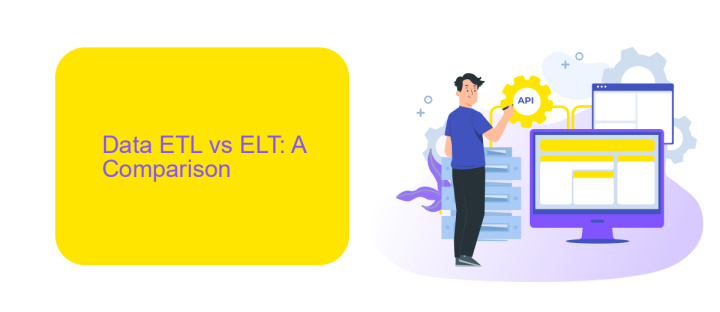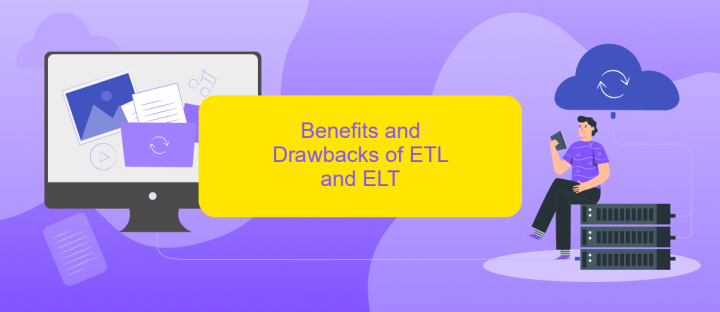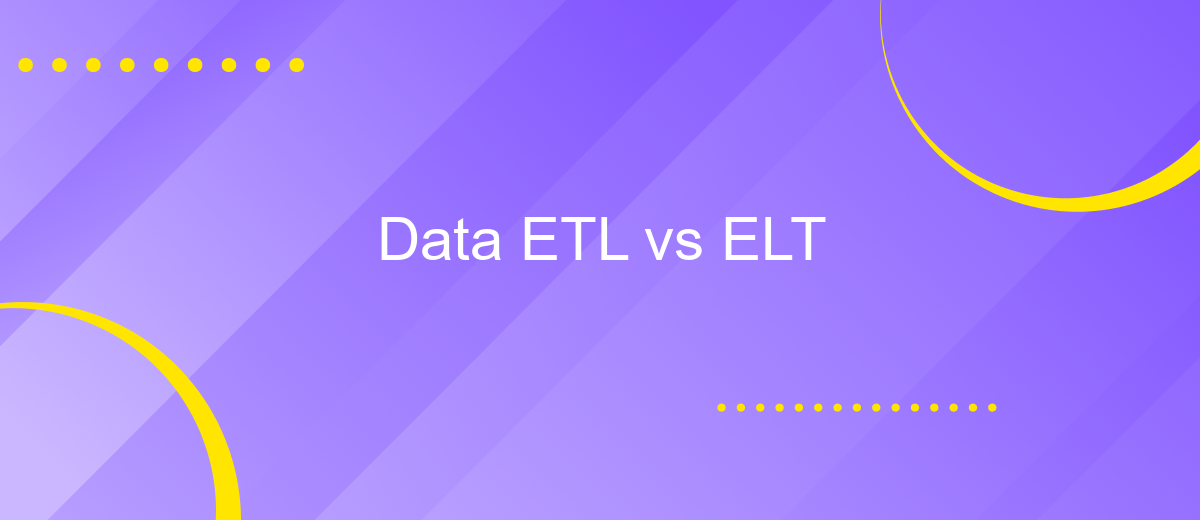Data ETL vs ELT
In the realm of data processing, ETL (Extract, Transform, Load) and ELT (Extract, Load, Transform) are pivotal methodologies. Both play crucial roles in how data is managed, but they differ fundamentally in their processes and applications. This article delves into the distinctions between ETL and ELT, exploring their advantages, use cases, and impact on data workflows.
Introduction
In the world of data management, the processes of ETL (Extract, Transform, Load) and ELT (Extract, Load, Transform) are pivotal for ensuring data integrity and accessibility. These methodologies are essential for businesses to make data-driven decisions and maintain competitive advantage. Understanding the key differences and applications of ETL and ELT can significantly impact the efficiency of data workflows.
- ETL: Data is extracted from source systems, transformed into a suitable format, and then loaded into the target database.
- ELT: Data is extracted and loaded into the target system first, where it is then transformed as needed.
Choosing between ETL and ELT depends on various factors such as data volume, processing speed, and the specific needs of the organization. Services like ApiX-Drive can streamline these processes by offering seamless integration solutions, allowing businesses to automate data workflows efficiently. By leveraging such tools, companies can focus more on data analysis and less on the complexities of data integration.
Data ETL vs ELT: A Comparison

Data ETL (Extract, Transform, Load) and ELT (Extract, Load, Transform) are two distinct methodologies used in data integration processes. ETL involves extracting data from various sources, transforming it into a suitable format, and then loading it into a data warehouse. This approach is beneficial when dealing with complex transformations and ensures data consistency before loading. On the other hand, ELT extracts data, loads it directly into the data warehouse, and then transforms it. This method leverages the power of modern data warehouses, allowing for faster data ingestion and transformation using the warehouse's processing capabilities.
When choosing between ETL and ELT, consider factors like data volume, transformation complexity, and processing power. ETL is ideal for scenarios requiring extensive data cleansing and transformation before loading, ensuring high data quality. ELT is suitable for large datasets where speed and scalability are critical. Tools like ApiX-Drive can facilitate both ETL and ELT processes by automating data integration and providing seamless connectivity between various data sources and destinations, thus simplifying the implementation of these methodologies.
Benefits and Drawbacks of ETL and ELT

ETL (Extract, Transform, Load) and ELT (Extract, Load, Transform) are two different approaches to data integration, each with its own set of benefits and drawbacks. Understanding these can help organizations choose the right method for their needs.
- ETL Benefits: ETL processes data transformation before loading it into the target system, ensuring data quality and consistency. It is suitable for complex transformations and legacy systems.
- ETL Drawbacks: ETL can be time-consuming and resource-intensive, especially for large datasets. It often requires specialized tools and expertise.
- ELT Benefits: ELT leverages the power of modern data warehouses to perform transformations after loading, making it faster and more scalable. It is ideal for big data and real-time analytics.
- ELT Drawbacks: ELT can lead to performance issues if the data warehouse is not optimized. It may also require significant storage and computing resources.
For organizations looking to streamline their data integration processes, services like ApiX-Drive can be highly beneficial. ApiX-Drive simplifies the setup of integrations, allowing for seamless data transfer and transformation between various systems, thus enhancing the efficiency of both ETL and ELT processes.
Choosing the Right Approach for Your Organization

When deciding between ETL (Extract, Transform, Load) and ELT (Extract, Load, Transform) for your organization, it's crucial to consider your specific needs and existing infrastructure. ETL is a traditional approach where data is transformed before loading into the data warehouse, making it suitable for smaller datasets and on-premises solutions. In contrast, ELT leverages the power of modern cloud-based data warehouses, allowing for faster processing and scalability by transforming data after loading.
To make an informed decision, evaluate the following factors:
- Data Volume: Large datasets may benefit from ELT's scalability.
- Infrastructure: On-premises solutions often favor ETL, while cloud environments are ideal for ELT.
- Complexity: ETL may be simpler for straightforward transformations, whereas ELT can handle more complex operations.
- Integration Tools: Services like ApiX-Drive can streamline the integration process, making it easier to implement either approach.
Ultimately, the choice between ETL and ELT should align with your organizational goals, technical capabilities, and future growth plans. Leveraging integration tools can further enhance the efficiency and effectiveness of your chosen method.


Conclusion
In conclusion, both ETL (Extract, Transform, Load) and ELT (Extract, Load, Transform) have their unique advantages and are suitable for different types of data integration scenarios. ETL is often preferred for traditional data warehousing environments where data transformation needs to occur before loading into the data warehouse. On the other hand, ELT is more fitting for modern, cloud-based data architectures where raw data can be loaded into a data lake or data warehouse first, and transformations can be performed later using the computational power of the storage system.
Choosing between ETL and ELT depends on your specific requirements, including data volume, processing speed, and the complexity of transformations. Tools like ApiX-Drive can streamline this decision-making process by offering seamless integration capabilities, allowing businesses to easily connect various data sources and automate workflows. By leveraging such services, organizations can ensure that their data integration strategy is both efficient and scalable, ultimately leading to better data-driven decision-making.
FAQ
What is the main difference between ETL and ELT?
When should I use ETL instead of ELT?
What are the advantages of using ELT over ETL?
How can I automate ETL/ELT processes?
Is ELT suitable for all types of data sources?
Time is the most valuable resource for business today. Almost half of it is wasted on routine tasks. Your employees are constantly forced to perform monotonous tasks that are difficult to classify as important and specialized. You can leave everything as it is by hiring additional employees, or you can automate most of the business processes using the ApiX-Drive online connector to get rid of unnecessary time and money expenses once and for all. The choice is yours!

